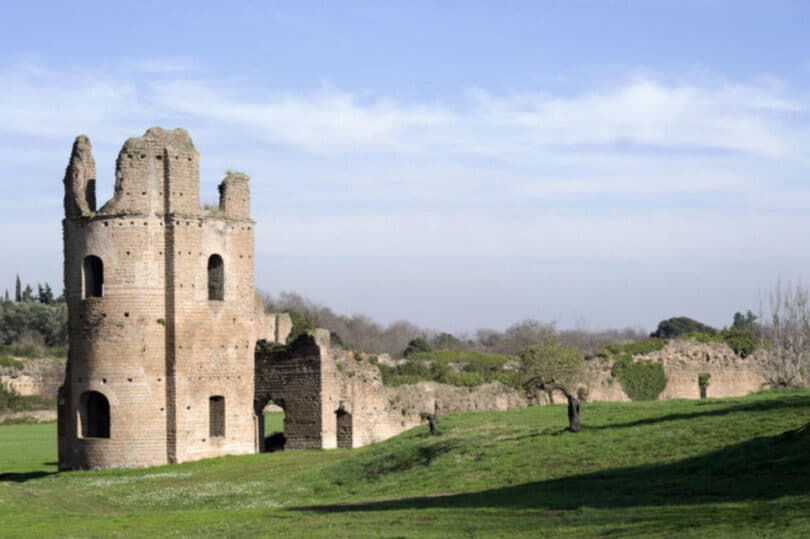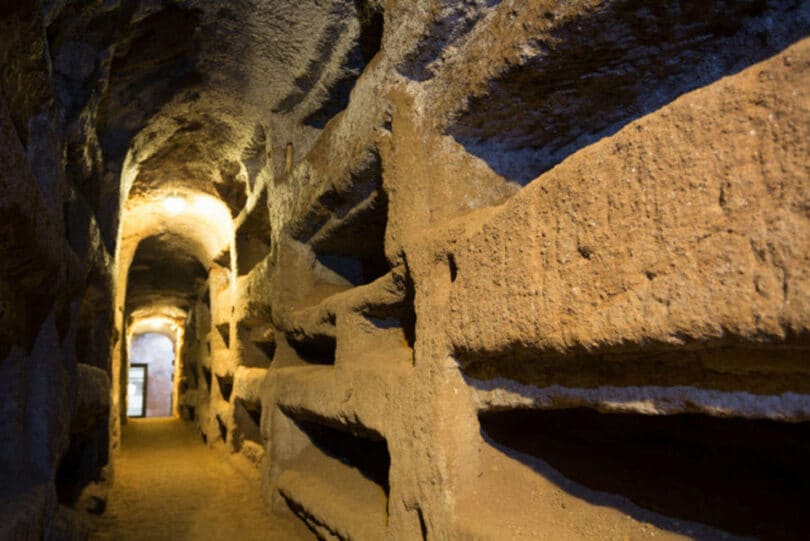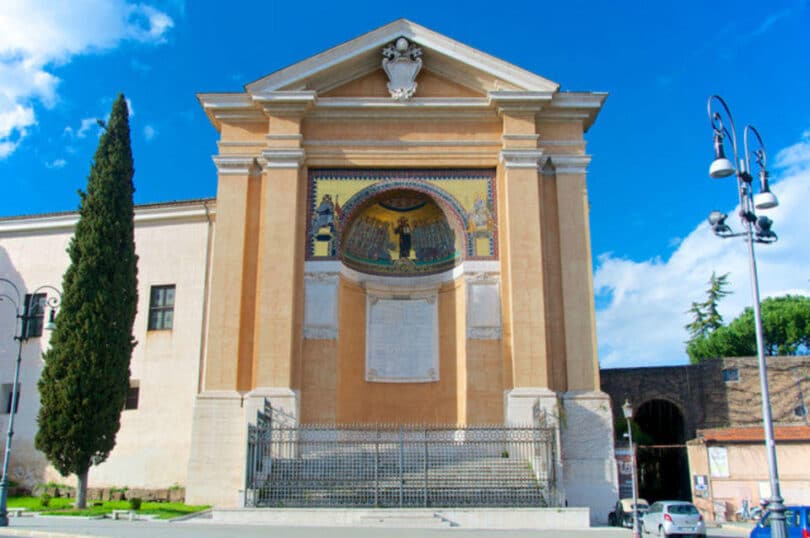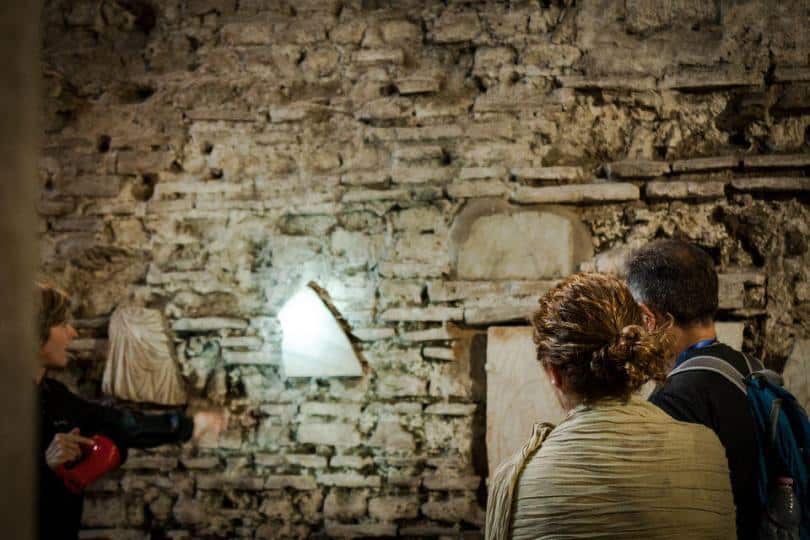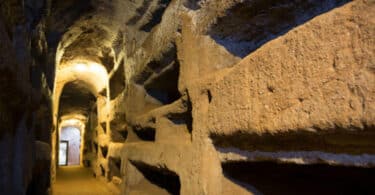79 Reviews
from €79.00 EUR
Duration: 3 Hours
Organized by: Gray Line I Love Rome
Embark on a journey through time and immerse yourself in Rome’s rich history by joining our half-day tour of the city’s most significant landmarks. Our expert guide will take you through the ancient streets of Rome, where you will get to visit some of the Eternal City’s grandest basilicas and catacombs.
The tour starts with a visit to two of the city’s most important basilicas, the Archbasilica of St. John Lateran and the Basilica of St. Mary Major. The former is the oldest of Rome’s four main basilicas and houses the Holy Stairs, which are considered a pilgrimage site by many. Meanwhile, the latter boasts an impressive collection of historic and religious artifacts, including stunning mosaics and the Crypt of the Nativity.
Next, we will take a stroll along the historic Appian Way, passing by the Chapel of Domine Quo Vadis, before arriving at the Catacombs of Rome. These remarkable subterranean cemeteries date back to the 2nd century and offer a unique glimpse into the early days of Christianity. Admire the historic artwork in the catacombs and learn how these underground passageways provide insight into the lives of early Christians.
Our tour is conducted in English, but we also offer guides who speak French, Spanish, German, Portuguese, and Italian. We provide headsets to ensure you are not disturbed by guides speaking in other languages.
To make things easy and flexible, we offer free cancellation up to 24 hours in advance for a full refund, and you can reserve your spot now and pay later. The tour lasts for three hours, and we provide entrance tickets, pickup from centrally located hotels (if option selected), and a local guide.
Please note that sleeveless shirts, shorts, and mini-skirts are not permitted when entering churches or religious sites.
Join our tour and immerse yourself in the rich history and beauty of Rome’s Basilicas and Catacombs. Check availability to see starting times and book your spot today.
About Appian Way
This is the most famous, the longest, the straightest of the old Roman roads and also the best preserved, it starts, more or iess, from the Baths of Caracalla and in an almost straight line, a good ninety kilometres, joins Terracina, Capua (in Campania), then goes through Benevento until it gets to Brindisi. It was the outlet of ancient Rome for traffic going East. It was called the “regina viarum”. “queen of the roads”.
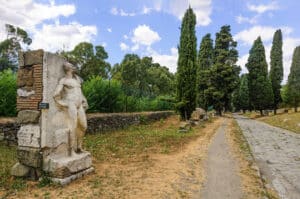
Appian Way
Begun in 312 BC by Appius Claudius, a censor who gave it his name, it was extended to Brindisi around 190 BC. It fell into disuse at the end of the Empire, was “rediscovered” during the Renaissance but was only restored in our century. It was built using extremely high standards of engineering (it is only in this century that this technology was rediscovered).
The Appian Way consists of four different and paved strata four metres and ten centimetres wide, sidewalks on either side, and at the time of the ancient Romans was lined with trees. Many patrician tombs line it as it was customary then to bury the dead outside the city walls.
To whoever travels along it today the Appian Way gives rise to powerful pictures -of wagons, people, armies, travelling merchants – and because of ttie many ancient tombs, the sacredness of death. The tomb of Cecilia Metella is certainly the most famous. This young patrician girl’s tomb is in the style of an Etruscan tumulus and anticipates the great mausoleums of Augustus and Hadrian. On a square stone base rises a cylindrical construction that encloses the small funeral chamber Tlie tomb, today decorated by Medieval crenelations, was surmounted by a pensile grove of cypresses.
There are many important monuments along the Appian Way and in its surroundings: from the Baths of Caracalia to the Catacombs of St. Callisto and the several patrician tombs. The enormous, well-preserved Baths of Caracalia, today used for summer operatic performances, could accommodate some one thousand six hundred bathers and were built towards 212 AD by the Emperor Caracalia. It has gymnasiums, baths, music rooms and underground rooms. Except for a few traces of the old mosaic pavement, all the decorations have disappeared. Two famous ancient works were excavated here: the Farnese Hercules and the Farnese Taurus.
The Basilicas of Rome
The word basilica comes from a Greek word meaning royal house, portico, or House of the King. Essentially, a basilica was a great hall with ‘aisles’ divided by rows of columns from the central ‘nave’, which in Christian times usually had a higher ceiling than the rest of the building. At the end of the large centre hall was a rounded area, the apse, where the presiding person sat. In Roman times the basilica was used for both public and private business.
The building of the first Christian basilica is attributed to the Emperor Constantine, ca. 313. Up to this time the celebration of the Eucharist and meetings of Christians usually took place in private houses. He donated the site of the present basilica of St John Lateran to the Pope and began to construct a basilica. Constantine also began the building of the first Basilica of St Peter in Rome, the Basilica of the Nativity in Bethlehem and the Basilica of the Annunciation in Nazareth, among many others. Since that time more than 350 historic churches have been built within Rome’s centro storico, the historic centre of the city.
Basilica of St. John Lateran
At the end of the Via Merulana is the first of the Roman basilicas, founded by Constantine I ca. 314-318, and dedicated to Christ the Redeemer. It was built on land that was originally owned by the family of Plautius Lateranus, a patrician put to death by Nero. Later additions to the title include St John the Baptist and St John the Apostle. The basilica is the cathedral of the diocese of Rome and an inscription describes it as ‘Mother and Head of all Churches in Rome and in the World’. Until 1870, St. John Lateran was the place where the Popes were crowned and it was the site of five General Councils of the Church, the first held in 1123. Pope Boniface VIII announced the celebration of the first Holy Year in St John Lateran in 1300.
The present building dates from the seventeenth century when Pope Innocent X commissioned Borromini to rebuild the basilica: a number of previous buildings had been fully or partly destroyed over the centuries by the Vandals, by an earthquake and by numerous fires. The facade dates from the eighteenth century and it is surmounted by giant statues of Christ, John the Baptist, John the Apostle, and Doctors of the Church.
In the interior of the church there are huge early eighteenth century Baroque statues of the Apostles in the niches of the pillars. The papal altar contains many relics, among which are said to be the heads of St Peter and St Paul and the wooden altar used by St Peter. There are many fragments and copies of mosaics belonging to buildings that were destroyed or damaged. A door in the left aisle gives entry to the cloisters
Catacombs
Contrary to popular belief the catacombs were not secret burial places for Christians. All burial sites were sacred to the Romans. Cemeteries were protected by law but people had to be buried outside the city limits. Jews and Christians were buried, whereas non-Jews and non-Christians burned their dead. In the beginning Christians buried their dead above ground in plots provided by Christian landowners. As numbers increased, the Christians dug into the soft tufa rock, constructed galleries or corridors, and buried their dead in ‘loculi’ or niches along the galleries. When the Christian religion became the religion of the state in the early fourth century the catacombs were no longer used as burial places but the dead were honoured by various religious celebrations.
The Goths vandalised the tombs in search of treasure and in the eighth and ninth centuries the remaining bones were removed to avoid plundering and commerce in bones. Many of the catacombs were in fact forgotten until rediscovered in 1849. The catacombs are normally open from 08.30-12.00 and in the afternoons from 15.30 until dusk. The weekly closing day varies with each catacomb.
- Explore St. John Lateran Basilica as well as St. Mary Major Basilica,
- Visit Rome’s Holy Stairs, an important pilgrimage city,
- Be amazed by the underground Catacombs of Rome,
- Listen to your guide and learn what happened in the history of this city.
- 3-hour live guided tour,
- Professional tour guide (local),
- Entry tickets,
- Visit to 2 main basilicas,
- Hotel Pickup (from centrally located hotels),
- Headsets.
Free cancellation up to 1 day before tour starts.
from €219.00 EUR
Duration: 2 Hours
Seller: Viator
19 Reviews
from €7.00 EUR
Duration: 90 Min.
Seller: Tiqets
177 Reviews
from €118.00 EUR
Duration: 3 Hours
Organized by: Welcome Italy
8 Reviews
from €315.00 EUR (per group)
Duration: 3 Hours
Organized by: MEA Tour & Events
from €422.54 EUR (Group Price)
Duration: 6 Hours
Seller: Viator
21 Reviews
from €14.00 EUR
Seller: Tiqets
13 Reviews
from €56.10 EUR
Duration: 3.5 Hours
Seller: Tiqets
36 Reviews
from €42.00 EUR
Duration: 3 Hours
Organized by: Mea Tours & Events
46 Reviews
from €80.00 EUR
Duration: 3.5 Hours
Organized by: romebysegway
from €165.00 EUR
Duration: 3 Hours
Seller: Viator
42 Reviews



